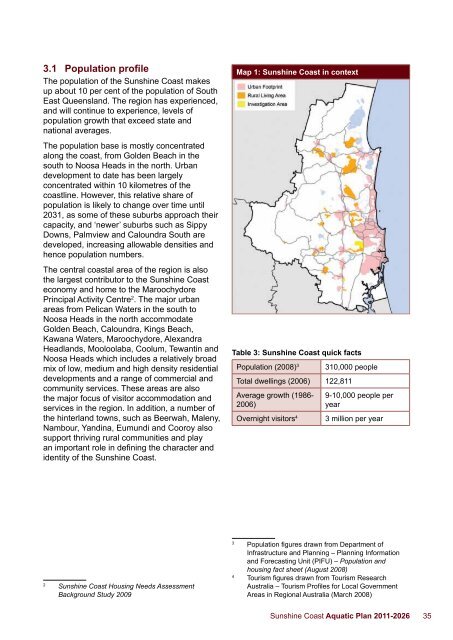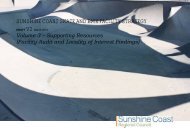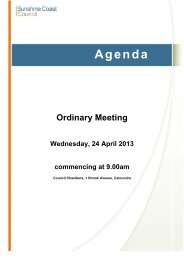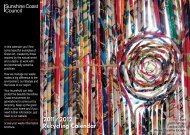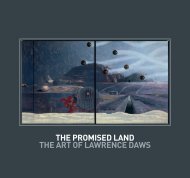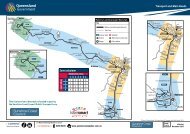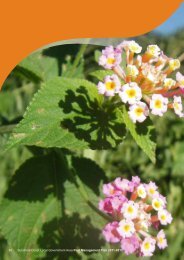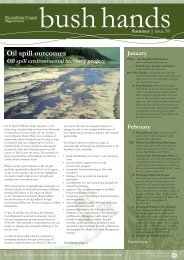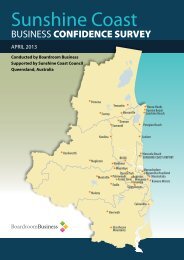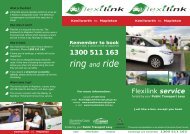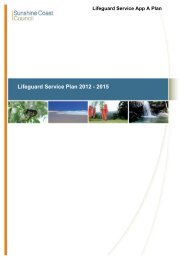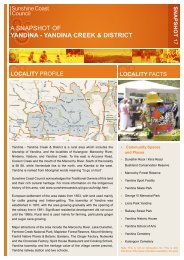Sunshine Coast Aquatic Plan 2011-2026 - Sunshine Coast Council
Sunshine Coast Aquatic Plan 2011-2026 - Sunshine Coast Council
Sunshine Coast Aquatic Plan 2011-2026 - Sunshine Coast Council
You also want an ePaper? Increase the reach of your titles
YUMPU automatically turns print PDFs into web optimized ePapers that Google loves.
3.1 Population profile<br />
The population of the <strong>Sunshine</strong> <strong>Coast</strong> makes<br />
up about 10 per cent of the population of South<br />
East Queensland. The region has experienced,<br />
and will continue to experience, levels of<br />
population growth that exceed state and<br />
national averages.<br />
The population base is mostly concentrated<br />
along the coast, from Golden Beach in the<br />
south to Noosa Heads in the north. Urban<br />
development to date has been largely<br />
concentrated within 10 kilometres of the<br />
coastline. However, this relative share of<br />
population is likely to change over time until<br />
2031, as some of these suburbs approach their<br />
capacity, and ‘newer’ suburbs such as Sippy<br />
Downs, Palmview and Caloundra South are<br />
developed, increasing allowable densities and<br />
hence population numbers.<br />
The central coastal area of the region is also<br />
the largest contributor to the <strong>Sunshine</strong> <strong>Coast</strong><br />
economy and home to the Maroochydore<br />
Principal Activity Centre 2 . The major urban<br />
areas from Pelican Waters in the south to<br />
Noosa Heads in the north accommodate<br />
Golden Beach, Caloundra, Kings Beach,<br />
Kawana Waters, Maroochydore, Alexandra<br />
Headlands, Mooloolaba, Coolum, Tewantin and<br />
Noosa Heads which includes a relatively broad<br />
mix of low, medium and high density residential<br />
developments and a range of commercial and<br />
community services. These areas are also<br />
the major focus of visitor accommodation and<br />
services in the region. In addition, a number of<br />
the hinterland towns, such as Beerwah, Maleny,<br />
Nambour, Yandina, Eumundi and Cooroy also<br />
support thriving rural communities and play<br />
an important role in defining the character and<br />
identity of the <strong>Sunshine</strong> <strong>Coast</strong>.<br />
Map 1: <strong>Sunshine</strong> <strong>Coast</strong> in context<br />
Table 3: <strong>Sunshine</strong> <strong>Coast</strong> quick facts 34<br />
Population (2008) 3<br />
310,000 people<br />
Total dwellings (2006) 122,811<br />
Average growth (1986-<br />
2006)<br />
Overnight visitors 4<br />
9-10,000 people per<br />
year<br />
3 million per year<br />
2<br />
<strong>Sunshine</strong> <strong>Coast</strong> Housing Needs Assessment<br />
Background Study 2009<br />
3<br />
Population figures drawn from Department of<br />
Infrastructure and <strong>Plan</strong>ning – <strong>Plan</strong>ning Information<br />
and Forecasting Unit (PIFU) – Population and<br />
housing fact sheet (August 2008)<br />
4<br />
Tourism figures drawn from Tourism Research<br />
Australia – Tourism Profiles for Local Government<br />
Areas in Regional Australia (March 2008)<br />
<strong>Sunshine</strong> <strong>Coast</strong> <strong>Aquatic</strong> <strong>Plan</strong> <strong>2011</strong>-<strong>2026</strong> 35


